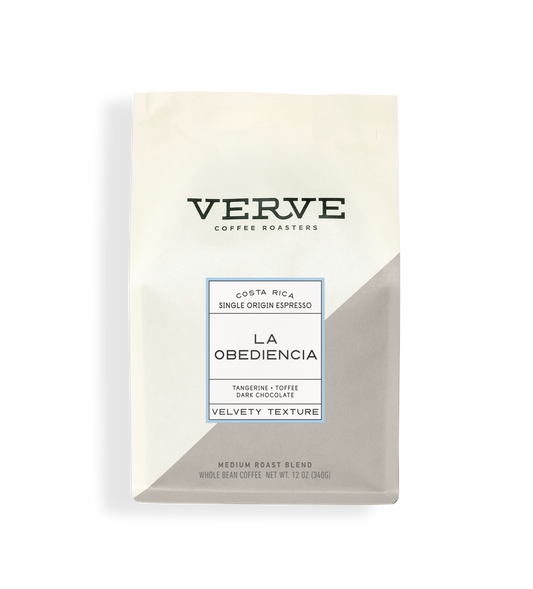SOE Single Origin Espresso – A Great Gift for Coffee Aficionados
SOE Single Origin Espresso – A Great Gift for Coffee Aficionados
Blog Article
Understanding Coffee Beans: the Journey From Coffee to Blended Coffee Beans

The Beginnings of Coffee: A Worldwide Perspective
While you might think about coffee as a modern staple, its beginnings trace back centuries, linking with societies around the world. The story starts in Ethiopia, where legend claims a goat herder called Kaldi found the energizing results of coffee beans after observing his goats frolicking energetically after consuming them. This stimulated rate of interest, resulting in coffee's infect Arab investors who valued the made drink. By the 15th century, it reached Persia, Egypt, and Turkey, where coffeehouses ended up being social centers for discussion and society.
As trade paths broadened, coffee made its means to Europe in the 17th century, quickly getting appeal. It transformed from a mystical beverage into an everyday ritual, intellectual exchanges and inspiring gatherings. Each society added its unique spin to coffee prep work, enhancing its history. This worldwide trip highlights exactly how coffee attaches us, going beyond borders and uniting diverse customs through a basic bean.
Cultivation and Harvesting of Espresso Beans
As coffee's trip evolved, the focus shifted to the cultivation and harvesting of specific bean varieties, particularly those used for espresso. You'll discover that espresso beans commonly come from Arabica or Robusta plants, each offering distinct flavors. The ideal growing conditions include high altitudes and abundant, well-drained dirt, which boost the beans' quality.
Throughout the harvest, selecting methods vary. In some areas, workers hand-pick ripe cherries, making certain only the most effective fruit mosts likely to processing. In other areas, mechanical harvesters are used, specifically on bigger farms. Timing is important; you want to collect when the cherries get to peak ripeness for optimum flavor.
As soon as gathered, the beans are prepared for processing, which is necessary in identifying their last taste. Understanding the farming and harvesting procedures gives you understanding into what goes right into your preferred coffee, improving your recognition for every cup.
Handling Techniques: From Cherry to Bean
Now that you've found out about harvesting coffee beans, allow's check out just how those cherries transform right into the coffee beans you enjoy. You'll see just how various harvesting methods effect taste, followed by the important steps of fermentation and drying out. We'll break down the milling and grading procedure that identifies your coffee's high quality.
Collecting Strategies Described
When it comes to coffee, comprehending harvesting methods is vital, considering that they straight affect the flavor and quality of the beans you enjoy. Selective picking entails hand-picking just ripe cherries, guaranteeing you get the best quality beans. Ultimately, the selection of collecting method can considerably influence your coffee experience, so it's worth knowing how those beans made it to your mug.
Fermentation and Drying Out
After gathering, the next action in handling coffee beans play a substantial function in forming their flavor. You'll find that fermentation is vital, as it helps break down the mucilage bordering the beans, boosting their preference account. Depending upon the technique, this process can last from a couple of hours to a number of days, with varying results based upon temperature level and moisture.
Sun-drying enables the beans to soak up flavors from the atmosphere, while mechanical drying guarantees constant dampness levels no matter of weather. Appropriate drying out is necessary to prevent mold and mildew and maintain the beans' quality, inevitably influencing your cup of coffee.
Milling and Grading Refine
As fermentation and drying set the stage for flavor growth, the milling and grading procedure warranties that only the best coffee beans make it to your cup. This phase involves removing the external layers of the coffee cherry, including the parchment and husk. High-grade beans receive a greater quality, resulting in a richer coffee experience.
Toasting Methods: Unlocking Flavor Potential
When you roast coffee beans, the method you choose can considerably influence the taste account. Recognizing the connection between time, temperature, and roasting techniques is key to revealing the potential of your mixture. Allow's discover exactly how these components collaborated to develop the best cup.
Roasting Approaches Clarified
While you may believe that all coffee roasting methods generate the very same results, the reality is that each method exposes distinct flavor possibilities in the beans. Drum roasting utilizes a rotating drum to uniformly disperse heat, improving caramelization and producing a balanced taste. Air roasting, on the various other hand, distributes warm air around the beans, promoting a lighter roast with noticable level of acidity.

Effect On Flavor Account
Various roasting techniques not just affect the process however additionally significantly influence the flavor profile of the coffee beans. When you pick a light roast, you'll experience intense acidity and floral notes, showcasing the bean's beginning. In contrast, a medium roast equilibriums level of acidity with sweetness, often exposing chocolatey touches. Dark read the article roasts, on the various other hand, bring out strong, great smoky tastes, often concealing the bean's distinct characteristics. Each strategy exposes various oils and compounds, resulting in a broad variety of tastes. By explore various roasting styles, you can find which accounts reverberate with your taste. Understanding these subtleties assists you value the virtuosity behind your mug browse around these guys of coffee, enhancing your overall experience with every sip.
Time and Temperature Level Elements
To launch the complete taste potential of coffee beans, both time and temperature level throughout the toasting process play significant duties. When toasting, you'll discover that greater temperature levels can promptly develop tastes, but if you hurry it, you might finish up with burned notes. Alternatively, reduced temperatures enable a more progressive flavor development, showcasing the beans' unique qualities.

Timing is equally as important; expanding the roast also long can cause a loss of acidity and illumination, while too brief a roast might leave the beans underdeveloped. Finding that pleasant place needs practice and testing. By readjusting these variables, you can reveal the rich, intricate tastes concealed within each bean, creating a really exceptional coffee experience.
The Art of Blending: Crafting One-of-a-kind Coffee Profiles

Begin by selecting a base coffee that provides a solid foundation. An intense Ethiopian bean can bring fruitiness, while an abundant Brazilian coffee includes body.
As you blend, keep in mind that each combination tells a story. You're not just making coffee; you're creating an experience. Take your time, taste regularly, and enjoy the trip of finding your trademark blend - Single Origin Espresso.
Developing Techniques: Just How Preparation Affects Flavor
Blending coffee opens up a domain name of flavor possibilities, but how you make that mix can substantially influence your final cup. Different brewing approaches draw out one-of-a-kind tastes and scents, so it's vital to select intelligently. A French press enables oils and debris to remain, producing an abundant, full-bodied experience. On the other hand, a pour-over highlights the coffee's clarity and brightness, ideal for showcasing fragile notes.
Espresso, with its high stress, generates a focused shot that highlights sweetness and crema. If you prefer a lighter mixture, take into consideration a chilly mixture approach; it yields a smooth, less acidic preference.
Adjusting variables like water temperature, grind dimension, and make time can change your coffee's profile. Welcome the art of brewing to find the tastes hidden in your coffee blends.
The Future of Coffee: Sustainability and Development
As the coffee industry advances, sustainability and development are becoming important for resolving environmental challenges and conference customer needs. You'll discover that even more coffee business are taking on eco-friendly methods, from sourcing beans morally to applying sustainable farming methods. These shifts not only help the earth however likewise enhance the quality of the coffee you appreciate.
You could see advancements like biodegradable product packaging and water-saving brewing approaches that reduce waste. Advanced modern technology, such as blockchain, is likewise coming to be popular, ensuring transparency in the supply chain, which enables you to trace your coffee back to its origins.
In addition, spending in local neighborhoods and supporting farmers via fair trade initiatives cultivates a more lasting coffee environment. As you drink your following cup, remember that your choices can contribute to a brighter future for coffee. By choosing for sustainable brands, you're not just delighting in a drink; you're making a favorable influence on the globe.
Frequently Asked Inquiries
What Is the Difference Between Arabica and Robusta Beans?
Arabica beans are smoother, sweeter, and have a higher level of acidity, while robusta beans are stronger, much more bitter, and contain more high levels of caffeine. You'll notice these distinctions in flavor dig this and aroma when brewing your coffee.
How Does Elevation Affect Coffee Bean Taste?
Elevation impacts coffee bean taste substantially. Greater elevations create beans with brighter acidity and facility flavors, while reduced altitudes often generate beans that are larger and much less nuanced. You'll notice these distinctions in your cup!
What Are the Wellness Advantages of Alcohol Consumption Coffee?
Consuming coffee can enhance your power, enhance psychological focus, and even enhance physical performance. It's abundant in anti-oxidants, may reduce the risk of certain diseases, and can promote a much healthier metabolic rate when eaten in moderation.
Can Coffee Beans Be Reused for Brewing?
Yes, you can recycle coffee beans for brewing, yet the taste might be weaker. If you take pleasure in experimenting, try recycling them in various means, like cold mixtures or including to healthy smoothies for an extra kick.
Exactly how Should I Shop Coffee Beans for Freshness?
To maintain your coffee beans fresh, store them in an airtight container in a great, dark area. Stay clear of subjecting them to light, wetness, or warmth, as these elements can swiftly degrade their flavor and scent.
Understanding Coffee Beans: the Trip From Coffee to Blended Coffee Beans.
Currently that you have actually learned regarding harvesting coffee beans, let's discover how those cherries change into the coffee beans you like.When you roast coffee beans, the method you pick can dramatically influence the taste profile - Single Origin Espresso.While you may believe that all coffee roasting approaches yield the same results, the reality is that each method discloses special taste possibilities in the beans.Different toasting techniques not only affect the process but also substantially affect the taste profile of the coffee beans
Report this page